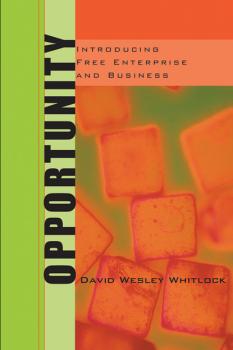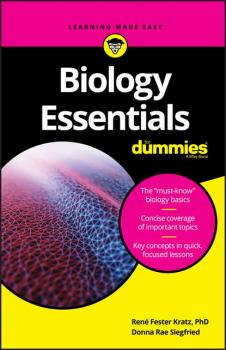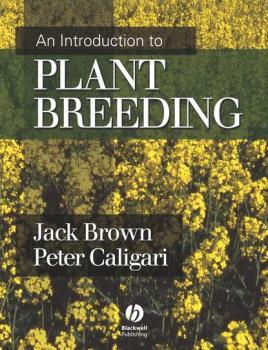Биология
Различные книги в жанре БиологияAproximación A Las Neuromatemáticas: El Cerebro Matemático
Mucho se ha hablado de las matemáticas en los últimos años sobre todo en cuanto a la necesidad de una educación aplicada a edades tempranas, por ejemplo en el caso de la economía, como forma de preparar a los menores para su futuro desempeño como ciudadano. Incluso se han producido mejoras en los procesos de aprendizaje relacionados con la incorporación de nuevas herramientas pedagógicas importadas de otros países. Pero la mayor revolución se ha producido desde las neurociencias y el avance que ha tenido en los últimos años lo que ha permitido estudiar y comprender el funcionamiento del cerebro mientras desarrolla funciones como las matemáticas. De ahí la necesidad de contar con obras actualizadas que aborden las distintas temáticas relacionado con el campo de las neurociencias y las matemáticas. Un libro accesible para todos los que quieran profundizar en el conocimiento del cerebro, y cómo aprovechar su potencial en cuanto a la educación matemática se refiere.
Biology Essentials For Dummies
Biology Essentials For Dummies (9781119589587) was previously published as Biology Essentials For Dummies (9781118072677). While this version features a new Dummies cover and design, the content is the same as the prior release and should not be considered a new or updated product. Just the core concepts you need to score high in your biology course Biology Essentials For Dummies focuses on just the core concepts you need to succeed in an introductory biology course. From identifying the structures and functions of plants and animals to grasping the crucial discoveries in evolutionary, reproductive, and ecological biology, this easy-to-follow guide lets you skip the suffering and score high at exam time. Get down to basics – master the fundamentals, from understanding what biologists study to how living things are classified The chemistry of life – find out what you need to know about atoms, elements, molecules, compounds, acids, bases, and more Conquer and divide – discover the ins and outs of asexual and sexual reproduction, including cell division and DNA replication Jump into the gene pool – grasp how proteins make traits happen, and easily understand DNA transcription, RNA processing, translation, and gene regulation.
Navigating an Academic Career: A Brief Guide for PhD Students, Postdocs, and New Faculty
Demystifies the academic career path with practical advice With the number of people being awarded PhDs growing far more rapidly than the supply of academic jobs, those at an early-career stage must think strategically in order to be competitive and successful. Navigating an Academic Career: A Brief Guide for PhD students, Post docs, and New Faculty is a concise and conversational manual that guides readers through starting their academic journey, surviving the demands of their first academic position, and thriving in academia and beyond. Volume highlights include: Firsthand perspective on the characteristics of a successful academic Guidance on interviewing, negotiating, branding, and other essential soft skills Tips for effective time management and writing high-impact research papers Insights into developing leadership skills and mentoring others The American Geophysical Union promotes discovery in Earth and space science for the benefit of humanity. Its publications disseminate scientific knowledge and provide resources for researchers, students, and professionals.
The Forests Handbook, Volume 2
The future of the world's forests is at the forefront of environmental debate. Rising concerns over the effects of deforestation and climate change are highlighting the need both to conserve and manage existing forests and woodland through sustainable forestry practices. The Forests Handbook, written by an international team of both scientists and practitioners, presents an integrated approach to forests and forestry, applying our present understanding of forest science to management practices, as a basis for achieving sustainability. Volume One presents an overview of the world's forests; their locations and what they are like, the science of how they operate as complex ecosystems and how they interact with their environment. Volume Two applies this science to reality; it focuses on forestry interventions and their impact, the principles governing how to protect forests and on how we can better harness the enormous benefits forests offer. Case studies are drawn from several different countries and are used to illustrate the key points. Development specialists, forest managers and those involved with land and land-use will find this handbook a valuable and comprehensive overview of forest science and forestry practice. Researchers and students of forestry, biology, ecology and geography will find it equally accessible and useful.
The Forests Handbook, Volume 1
The future of the world's forests is at the forefront of environmental debate. Rising concerns over the effects of deforestation and climate change are highlighting the need both to conserve and manage existing forests and woodland through sustainable forestry practices. The Forests Handbook, written by an international team of both scientists and practitioners, presents an integrated approach to forests and forestry, applying our present understanding of forest science to management practices, as a basis for achieving sustainability. Volume One presents an overview of the world's forests; their locations and what they are like, the science of how they operate as complex ecosystems and how they interact with their environment. Volume Two applies this science to reality; it focuses on forestry interventions and their impact, the principles governing how to protect forests and on how we can better harness the enormous benefits forests offer. Case studies are drawn from several different countries and are used to illustrate the key points. Development specialists, forest managers and those involved with land and land-use will find this handbook a valuable and comprehensive overview of forest science and forestry practice. Researchers and students of forestry, biology, ecology and geography will find it equally accessible and useful.
An Introduction to Plant Breeding
Plants have been successfully selectively bred for thousands of years, culminating in incredible yields, quality, resistance and so on that we see in our modern day crops and ornamental plants. In recent years the techniques used have been rapidly advanced and refined to include molecular, cell and genetic techniques. An Introduction to Plant Breeding provides comprehensive coverage of the whole area of plant breeding. Covering modes of reproduction in plants, breeding objectives and schemes, genetics, predictions, selection, alternative techniques and practical considerations. Each chapter is carefully laid out in a student friendly way and includes questions for the reader. The book is essential reading for all those studying, teaching and researching plant breeding.









